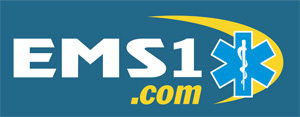Debating with some folks on the various EMS social media forums lately, I was struck with the cognitive dissonance apparent in some providers’ attitudes about pain management.
To wit, a distressing number of EMS providers still cling to 1950’s era myth bullshit legend dogma that providing analgesia to patients with abdominal pain complicates the physician’s assessment in the Emergency Department.
I wonder, what would they sound like if they extended that same faulty rationale to the rest of their treatments?
I don’t give dextrose to patients with low blood sugar, because how else will the ED doc know the patient was hypoglycemic to begin with?
Parents shouldn’t give their kids Motrin or Tylenol before they call 911. I mean, the paramedics *need* to personally observe the fever, right?
I won’t decompress a tension pneumothorax in the field. If I relieve the tension, how will the ED doc ever know that the needle decompression was warranted?
Don’t give oxygen to your patients. Their oxygen saturation still needs to be low so the doctor can see that they were truly hypoxic. Besides, there’s no way he can diagnose the respiratory condition if the patient isn’t currently gasping like a landed fish.
If your patient is seizing, don’t give anticonvulsants. Just drive real fast, so the doctor can do an EEG to make sure the seizure is legit before he treats it.
Despite the fact that no competent surgeon in the age of diagnostic imaging is going to cut on someone based on physical findings alone, adequate pain management actually makes that physical exam easier to perform.
It’s almost as if, I dunno, it’s easier to assess someone if they aren’t writhing on the exam table in excruciating pain.
Nah, that’s just crazy talk right there.
And on that note, here’s a little thought exercise for those medics who think proximity to the Emergency Department is a factor in providing pain relief:
Let’s say Grandma lives two blocks from the ED, and falls and busts her hip. It takes you roughly five minutes to arrive after she calls 911. You assess her, and determine that, yes, her hip is broken. Then you sweat, strain, grunt and curse silently for the next ten minutes trying to extricate her from the tiny bedroom in the back of her house.
Maybe you do the kind thing and put an upside-down KED on her to stabilize her hips and ease extrication, and maybe you don’t. Maybe you just wait until you put her on the cot, and pad her busted hip with a pillow.
Now you wheel her to the rig, and load the cot. Every pebble you run over, every joint in the sidewalk, every jolt as you lift the undercarriage of the stretcher and latch it in, is transmitted to that busted hip.
Now your partner drives the two blocks to the hospital you can see from her front door, blissfully unconcerned that every bump in the road he feels in that driver’s seat is ten times as intense in the back of the rig. He bumps up on the curb – one jolt for each axle, and four jolts and Godawful sways if he doesn’t hit it square – at the ED entrance, and maybe again as he backs into the ambulance bay.
The you unload the cot, and do all those bumps and jolts in reverse as you wheel the patient into the ED. You make contact with the triage nurse and tell her Grandma’s story. The triage nurse or ED tech probably grabs another set of vitals and tells you to grab an empty section of wall and wait until they have an open room.
Meanwhile, the admission clerk gets some demographic and insurance info, and a few signatures, next of kin and religious preference.
Mercifully, it’s relatively slow in the ED today, and you wait no more than five minutes before the triage nurse tells you Room Eleven is available. You trundle down to the room, gently move Grandma and her busted hip over to their stretcher, eliciting yet another agonized groan from her as you obtain a signature and give her a perfunctory, “Get well soon!”
It’s another five minutes before the nurse assigned to Room Eleven makes an appearance. She does a quick assessment, determines that Grandma’s hip is indeed broken, and orders an X-ray for confirmation. Maybe she takes note of Grandma’s pinched expression and pale face, and asks the ED doctor for some pain relief meds for the poor lady.
He gives her a verbal order for some morphine or Dilaudid, and she moseys over to the Pyxis system to withdraw a controlled substance from inventory. Only she discovers that Grandma isn’t in the computer yet, because the admission clerk has a backlog of patients to register. So she pokes her head around the corner and hollers, “Hey Misty, I need you to quick register the lady in Room Eleven. I need to give her some pain meds!”
Misty, being a kind and conscientious soul, does just that, but it still takes three minutes for Grandma’s current ED visit to show up in the computer, so the nurse can withdraw that controlled substance from the little vending machine, which requires a signature and a medical record number for tracking.
By the time she gets back to the room, the radiology techs have already brought Grandma down the hall for her x-rays. It takes ten minutes for them to bring her back. Who knows how much they had to shift her around to get good images.
So by the time Grandma actually gets her pain medicine, if thirty minutes haven’t passed just since she entered the Emergency Department, I’ll eat your shorts.
More likely, it will be closer to an hour.
If I gave pain medicine to every single patient that complained of pain, two things would happen: I’d run out of narcotics every single shift, and I’d be subjected to a lot more “random” drug tests.
But if someone has an obvious need for pain management, I am not letting distance to the ED factor into my decision. It’s inhumane.
In fact, even if Granny busts a hip in the friggin’ ED parking lot, I’m medicating her to the eyeballs before I even move her off the pavement.
There is no magic Dilaudid Fairy to greet your patients at the ambulance entrance, guys. Relieve pain when you see it.
 Ambulance Driver Files A Day in the Life | Kelly Grayson
Ambulance Driver Files A Day in the Life | Kelly Grayson

